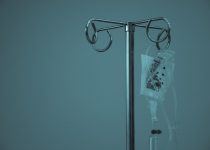Frequently Asked Questions About Trigger Finger Answered

Trigger finger is a painful condition that is associated with aging. It also affects people who have existing conditions like gout, diabetes mellitus, and rheumatoid arthritis. While the trigger finger is not life-threatening, it offers serious discomfort.
Over the last couple of years, the condition has become prevalent among people over 60 years in Singapore and other parts of the world. If you are one of them, it is critical that you take prompt action to learn as much as you can about it, and the best way to address it. In your quest to address it for good, questions like – What is trigger finger? What causes it? What are its signs and symptoms? What is the best treatment option for it? And many more are likely going to come to your mind. Don’t despair when they do, as a lot of research has been carried out over the years to learn about this condition. The result of this research has indeed been fruitful as there are answers to basically every question about trigger finger and its treatment.
The following article by memc unveils the answers to some common questions about trigger finger.
Common Questions about Trigger Finger: What is it?
Trigger finger (also known as stenosing tenosynovitis) is a condition in which one experiences pain and swelling over the base of the thumb or finger. This is associated with a jerking, snapping, or clicking when one extends the affected digit from a fully clenched position Read more here.
You likely now know the answers to some frequently asked questions about trigger finger like-what causes it? Why you should see a hand surgeon if you have it and some non-surgical procedures to address it. Even after knowing all these, you might still be curious, or not fully understand some part of it. Well, if that is the case, you are going to benefit from the next article.
The following article by Fraser J. Leversedge, MD Rachel Rohde, MD is a comprehensive guide that contains everything you need to know about trigger finger.
Trigger Finger
Trigger finger is a condition that causes pain, stiffness, and a sensation of locking, or catching when you bend and straighten your finger. The condition is also known as “stenosing tenosynovitis.” The ring finger and thumb are most often affected by trigger finger Read more here.
You surely now have a clear picture of the signs, causes, and treatment of trigger finger. But do you know the best way to address it for good? Do you know of some complications that could arise after treating it? Do you know how to prevent? If you don’t, you are going to benefit from the next article, as it contains the answers to these questions and many more.
The following article by DiseasesDic shed light on some important things you probably didn’t know about the treatment and prevention of trigger finger.
Trigger Finger- Causes, Complications, and Treatment
Trigger finger or stenosing tenosynovitis is a condition that involves one of the fingers or thumbs becoming stuck in a bent position and then rapidly straightened like the trigger of a gun. This condition is caused by a narrowing of the sheath that surrounds the tendons in the finger. Read more here.
You likely now know some easy ways to prevent trigger finger, like exercising and not overusing it, especially if you have rheumatoid arthritis or diabetes. You also now know some complications that may arise after a trigger finger surgery like infection, severe pain, nerve damage, just to name a few.
Final note
Trigger finger is a condition that must never be ignored, and for good reasons. You see, not treating it early will likely make it worse and difficult to treat. The best cause of action, therefore, is to address it as soon as possible.
Of course, there are a lot of surgical and non-surgical treatment options to address it, but some of them may not be good for you. To narrow down the best one, you may have to consult a doctor.
Even if you don’t have the condition, it is still a good idea to learn about it. Doing this will put you in a better position to determine how to prevent it and the best way to treat it.

